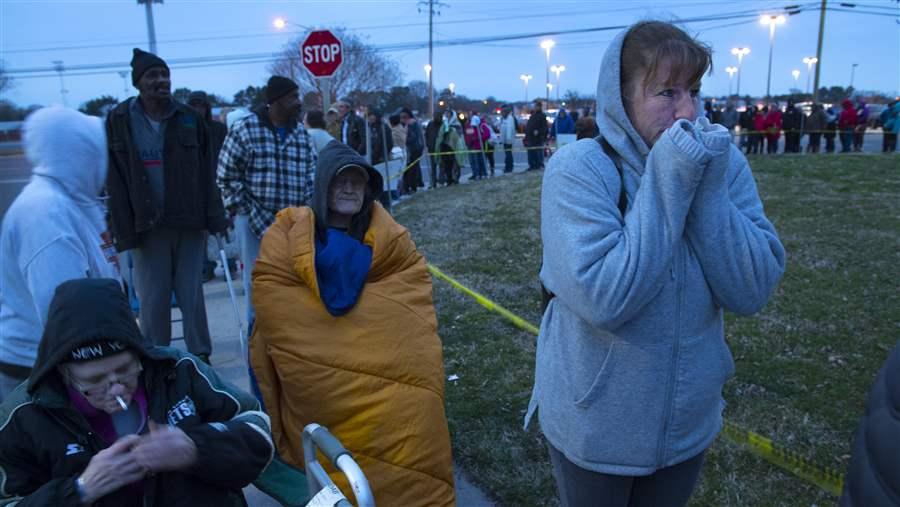Who Can’t Get Dental Care?
Neglect can lead to long-term health problems for millions

People in need of dental care brave subfreezing temperatures outside a free clinic in Salisbury, Maryland. One part of a strategy to expand access is to allow dentists to hire dental therapists.
Linda Davidson/The Washington Post/Getty Images
Only about a third of U.S. dentists accept public insurance, which limits access to care for the 72 million children and adults who rely on Medicaid and the Children’s Health Insurance Program. More than 50 million people live in areas with dentist shortages. Access to dental care disproportionately affects seniors, people of color, those with low incomes, and rural residents.
The Washington Post’s recent article “The Painful Truth About Teeth” paints a sobering picture of everyday Americans with limited access to care: “Millions of [people] rely on charity clinics and hospital emergency rooms to treat painful and neglected teeth. Unable to afford expensive root canals and crowns, many simply have them pulled. Nearly 1 in 5 Americans older than 65 do not have a single real tooth left.”
“Our Teeth Are Making Us Sick,” a New York Times column, also highlights difficulty with care and explores the long-term health problems that result from neglect: “Gum disease can increase the risk of heart disease and diabetes, and among pregnant women it is correlated with lower birth weights for their babies.” Additionally, tooth decay causes pain, an inability to eat solid foods, and even more serious problems if left untreated.
These articles are especially timely as more and more states wrestle with how to increase access to dental care.
One part of a comprehensive strategy is to allow dentists to hire dental therapists. States as varied as Massachusetts, Texas, and Washington—along with nine others—are exploring this option.
The Pew Charitable Trusts supports the expanded use of dental therapists, which are akin to a physician assistant in medicine. They have been shown to provide high-quality, cost-efficient care in the states where they practice and in more than 50 countries. Unlike hygienists, dental therapists can provide routine restorative procedures like filling cavities along with preventative care.
In Minnesota, the first U.S. state to allow dentists to hire dental therapists, these providers are expanding care in rural areas by working in remote offices and keeping in contact with their supervising dentists using technology and electronic health records. They are also making it more cost-effective for private practices and public health centers to treat Medicaid patients. Finally, they are providing care to people who often have trouble getting to a dentist’s office during working hours by treating them in public settings such as nursing homes and schools.
The United States needs a multifaceted, comprehensive approach to address the dental care shortage and the disease that lack of treatment causes for tens of millions of people. Dental therapy is one important piece necessary for an effective change.
John Grant directs The Pew Charitable Trusts’ dental campaign.






